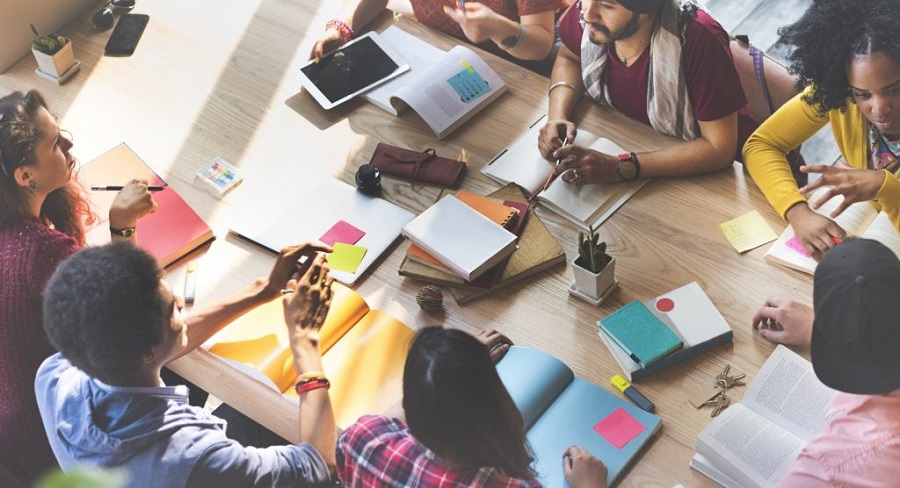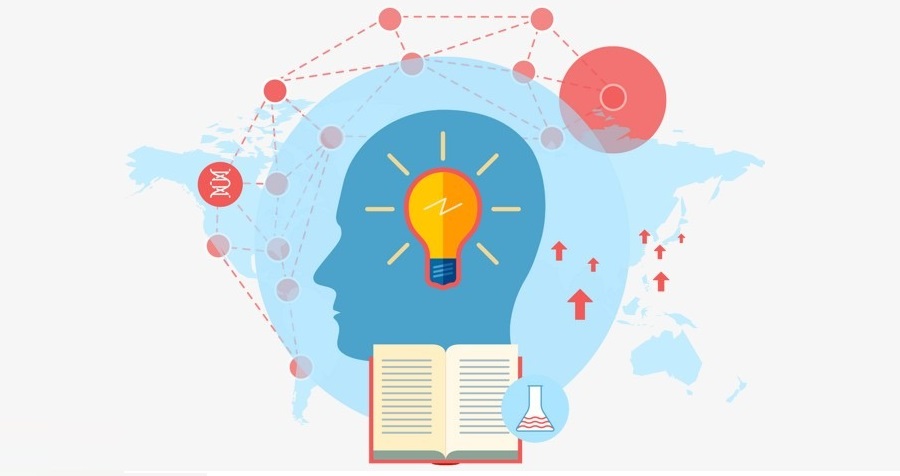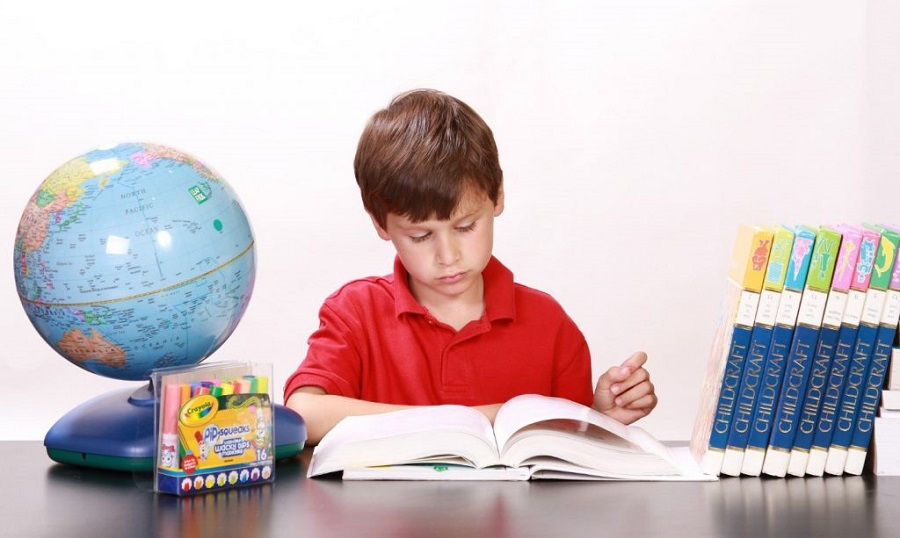Active learning is an educational philosophy that relies on enhancing the role of the learner in the educational process. Active learning involves all educational actions and teaching processes that aim at enabling the learner. In this method of learning, learning itself takes place through work, research, and experimentation. It relies on the learner depending on him/herself in obtaining information and gaining skills.
Active learning does not focus on memorization, but on developing thought and problem-solving skills, in addition to teamwork and cooperation. The focus of active learning is not on acquiring new information, but on the way and method by which the student acquires information, skills, and values.
Get started Skolera for FREE
Table of Contents
Foundations of Active Learning:
Active learning is based on several foundations. They include:
- Teaching students based on their own individual speeds of learning, with self-evaluation and peer-evaluation.
- Providing communication between students and teachers.
- Allowing students to exercise self-management to provide a safe and enjoyable environment.
- Helping the student understand him/herself and discover his/her strengths and weaknesses.
Features of Active Learning:
- It increases student participation and makes learning more enjoyable.
- It encourages students to work more and increase the variety of their work, as it develops their thinking and research skills.
- It develops social relations between students and with their educator.
- It gets students used to following the rules of work and develops direction and production values in them.
- It helps create interaction between the students and encourages positive competition.
The Role of the Teacher and Learner in Active Learning
First: The Role of the Teacher:
The role of the teacher changes in active learning, as he/she is no longer the only source of information, but rather the guide and enabler of learning. He/she has no control over the student’s learning as is the case in traditional learning, but he/she manages the educational process wisely. He/she prepares the students for and helps them gradually with their new roles, and helps them acquire life skills and characteristics. The teacher also transfers his/her experience to the students to elevate them as learners.

From here we realize that active learning requires the teacher to perform the following roles:
- Use several educational activities and methods according to the students’ capabilities and learning styles. A variety of duties and delegated tasks are assigned to the students, providing each of them with a duty or task suitable for his/her capabilities and abilities.
- Be aware of the strengths and weaknesses of the students to provide them with opportunities for more success.
- Provide a variety of teaching methods to be used in the classroom, relying on active learning rather than lecturing. This is to help guarantee a suitable method of teaching that fits each student’s style of learning.
- Focus the effort on guiding and supporting students in achieving the objectives of learning, rather than having them memorize. Teach them how to think, not what to think.
- Motivate students to learn, discover, and experiment, making them active in the educational process.
- Challenge the students and motivate them to their full potential.
- Work with colleagues and coworkers to encourage others to take on active learning as a method.
Second: The Role of the Learner
Given the focus of active learning on the participation of the learner, we can identify the role of the learner in active learning as follows:
- Students participate in the planning and delivery of the lesson.
- Students search for information through various sources on their own.
- Students participate in self-evaluation.
- Students participate in a variety of learning activities.
- Students participate in group work with their classmates.
- Students present questions, ideas, new insight, or comments on the material taught.
- Students can debate and discuss, as well as manage the discussion.
Sign up for free
Active Learning Strategies
Skolera system help to enhance communications between teachers and student, which in turn facilitates the implementing of active learning strategies in the classroom. Watch this video before diving into the list of active learning strategies:
1- Dialogue and Discussion Strategy
Dialogues are one strategy for active learning. They involve organized discussions that rely on the exchange of ideas, opinions, and experiences between individuals in the lesson. They aim at developing thinking skills in the learners through the evidence they present to support their positions.

Features of Dialogue:
- It supports student comprehension of the educational material.
- It increases interaction and cooperation of the students in the process, and it increases their self-confidence.
- It provides instant feedback to the students on their knowledge and understanding.
- It provides learners the opportunity to utilize their thinking, listening, and communication skills.
- It enhances the spirit of cooperation and competition between the students and prevents monotony and boredom.
- It provides the opportunity to inquire about new ideas.
- It helps the teacher take the individual student differences into consideration.
- It provides the learner with numerous skills such as constructing ideas, explaining and summarizing, manners in dialogue and discussions and respecting other opinions.
- It creates interaction between the students and the teacher and opens channels of communication inside the classroom.
- It provides the learners with opportunities to express their opinions and points of view and exchange ideas through explanation and comments.
2- Brainstorming Strategy
Brainstorming is a strategy of teaching that relies on asking students for their ideas and participation. This strategy works well while preparing students for a reading, discussion, or writing of a topic.

The Importance of the Brainstorming Strategy:
- Developing innovative solutions to problems. This helps students innovate.
- Enticing student interest and thought in the educational process and develop self-confidence and independence.
- Affirming the essential concepts delivered in the lesson and ensuring students grasped the main ideas.
- Determining the level of understanding of the students regarding the concepts and principles, and determining their preparedness to move on to the next step.
Join Us Now for FREE
3- Problem Solving Strategy
The problem-solving strategy has several benefits and features including:
- Providing the required conditions to let students discover information on their own rather than receiving it prepared in a book and from a teacher. This aims at making the learner a discoverer of knowledge through problem-solving, and not a consumer of it.
- Reinforces important skills including observation, concluding, describing, classifying, organizing, analyzing, predicting, etc.
- Focusing on teaching the student how to think and how to organize his/her thoughts and manage the discussion.
- Utilizing questions that activate and motivate thinking, to train the student on arriving at the correct answers on his/her own.
- Strengthening the relationship of harmony and familiarity between the students and the teachers?
- Achieving student independence and making him/her more capable of accepting new experiences, searching, discovering, criticizing, and becoming more innovative.
- This method is adaptable to life, as facing problems and finding solutions are experiences an individual faces in his/her daily life.
- Enabling students to evaluate their work and provides them with feedback on their performance and how much they’ve advanced toward the solution.
Problem-solving steps can be summarized as follows:
- Identifying the problem
- Collecting information on the problem
- Suggesting solutions to the problem
- Discussing the proposed solutions to the problem
- Reaching the ideal solution to the problem
- Implementing the conclusion in new situations
4- Discovery Strategy
This strategy relies on the student acquiring the information on his/her own, relying on his/her effort and thinking. This strategy is considered one of the most important strategies in developing thinking skills. Learning through discovery has two categories:
Guided Discovery
In this form, teachers guide students through the discovery process with a group of questions and directions.
Free Discovery:
In this form, the teacher does not provide any guidance or directions but allows the students complete freedom to learn from their mistakes.
5- Cooperative Learning Strategy
Cooperative learning is a method of learning in which students are split into small groups, each containing varying levels of skills and varying talents. The groups are given a task that must be completed.
Among the most important features of cooperative learning:
- It provides opportunities to guarantee learners’ success through the exchange of ideas.
- It provides the student with the opportunity to learn through thinking, speaking, and listening with others.
- It provides the student with the opportunity to ask questions and discuss ideas with his/her peers.
- It instills the values of teamwork and responsibility to the group.
6- Self-Learning Strategy
This strategy encourages the learner to learn on his/her own with his/her own abilities, talents, and interests and at his/her own time. The learner becomes responsible for his level of success and understanding.

The principles of self-learning:
- It provides students with the ability to progress according to each of their own abilities.
- Self-learning encourages students to perfect their understanding of lessons and units of a course before moving onto the next.
- With self-learning, the student becomes responsible for the material he/she learns and he/she refers to various sources to acquire and confirm the information needed.
Create Free Account
 Skolera LMS Blog Educational Technology Articles and News
Skolera LMS Blog Educational Technology Articles and News

